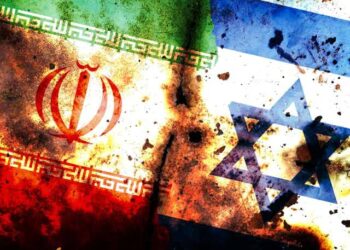The fragile ceasefire between India and Pakistan appears to be holding despite initial violations reported by both sides. Following days of the most intense fighting between the nuclear-armed neighbors in decades, an uneasy calm has settled across the borders from Jammu and Kashmir to Gujarat. This comprehensive analysis examines the immediate aftermath of the ceasefire understanding, the return to normalcy, military operations, and diplomatic developments that continue to shape this volatile situation.

The ceasefire understanding between India and Pakistan came into effect after days of escalating tensions and cross-border strikes.
The Ceasefire Understanding and Immediate Effects
The ceasefire “understanding” between India and Pakistan came into effect on Saturday following intense diplomatic efforts, including mediation by the United States. U.S. President Donald Trump announced the agreement on his Truth Social platform, stating that both countries had agreed to a “full and immediate ceasefire” after a “long night of talks.”
Within hours of the announcement, however, both sides accused each other of violations. Explosions were reported in Srinagar and Jammu in Indian-administered Kashmir, with residents describing sounds different from those heard during previous drone attacks. The Indian Director General of Military Operations (DGMO) sent a “hotline message” to Pakistan regarding these violations, warning of a response if repeated.
Despite these initial tensions, the situation has remained largely peaceful along the borders. Precautionary blackouts were implemented in Rajasthan’s Barmer district following drone sightings, with similar measures taken in several Punjab districts as a preventive step.

Residents cautiously return to markets in border towns as life begins to normalize following the ceasefire.
Return to Normalcy: Markets Reopen and Life Resumes
As the ceasefire holds, signs of normalcy are gradually returning to affected areas. Markets have reopened across border regions with heavy security presence, allowing residents to resume daily activities that had been disrupted by constant missile and drone attacks over the previous days.
Educational institutions are taking a more cautious approach. Schools in Punjab are scheduled to reopen gradually starting Monday, while some districts have extended closures for an additional day as a precautionary measure. Local authorities are closely monitoring the situation before giving full clearance for normal operations to resume.

Schools in Punjab are preparing to welcome students back as authorities deem it safe to resume educational activities.
In border areas, however, authorities have advised some residents to delay their return home. In Baramulla, Indian-administered Kashmir, officials warned people to stay away due to the threat posed by unexploded munitions. Infrastructure repairs are also underway, including at a key power plant in Uri that was damaged during a Pakistani drone attack.
“People here are hosting us well, but just as a bird feels at peace in its own nest, we also feel comfortable only in our own homes, even if they have been damaged,” said Azam Chaudhry, 55, who fled his home in the Pakistani town of Khuiratta.
– Displaced resident awaiting clearance to return home
Operation Sindoor: Indian Armed Forces Media Briefing

Indian military officials present evidence of precision strikes during Operation Sindoor at a media briefing.
The Indian Armed Forces held a comprehensive media briefing about Operation Sindoor and the subsequent military exchanges with Pakistan. During the briefing, officials revealed significant details about the operation’s outcomes and India’s military readiness.
Key Outcomes of Operation Sindoor:
- Over 100 terrorists eliminated, including high-profile targets
- 35-40 Pakistani security personnel killed in the escalation
- Evidence provided of precision strikes against terrorist infrastructure
- IC-814 hijackers and Pulwama attack perpetrators among those eliminated
Air Marshal A.K. Bharti displayed before-and-after images of the destroyed terrorist targets during the May 7 strikes. When questioned about Pakistani casualties, he stated, “Our job is to hit targets, not to count body bags,” emphasizing the precision and effectiveness of the operation rather than casualty figures.

Before and after satellite imagery of strike locations presented by Air Marshal A.K. Bharti as evidence of Operation Sindoor’s precision.
The Indian Navy revealed its readiness to strike Karachi if required, though the conflict did not escalate to that level. Military officials emphasized that India’s armed forces remain on high alert and are prepared to respond decisively if Pakistan violates the ceasefire understanding again.

The Indian Navy maintained readiness to strike Karachi if the conflict had escalated further.
Diplomatic Developments: Trump’s Mediation Offer

U.S. President Donald Trump offered to mediate a solution to the Kashmir issue between India and Pakistan.
U.S. President Donald Trump not only announced the ceasefire but also offered to mediate a solution to the long-standing Kashmir issue between India and Pakistan. This diplomatic intervention came after U.S. Secretary of State Marco Rubio and Vice President JD Vance engaged in extensive negotiations with top officials from both countries.
The responses from India and Pakistan to this mediation offer highlighted their contrasting approaches to third-party involvement. Pakistan welcomed Trump’s offer, with the foreign ministry stating that it remained “committed to peace in the region” and open to dialogue.
India, however, rejected the mediation offer, maintaining its long-standing position that disputes with Pakistan must be resolved bilaterally without third-party involvement. Indian officials emphasized that the only matter for discussion was Pakistan’s return of occupied Jammu and Kashmir territories.

Indian National Security Advisor Ajit Doval told Chinese Foreign Minister Wang Yi that “War Is Not India’s Choice.”
In a separate diplomatic development, Indian National Security Advisor Ajit Doval spoke with Chinese Foreign Minister Wang Yi, emphasizing that “War Is Not India’s Choice.” This communication with China, a close ally of Pakistan, indicated India’s efforts to manage regional perceptions of the conflict while maintaining its security stance.
Regional Implications and Future Outlook

The Line of Control between India and Pakistan remains one of the world’s most militarized borders despite the ceasefire.
The ceasefire understanding, while fragile, represents a critical step toward de-escalation between the nuclear-armed neighbors. However, the underlying tensions and disputed territories, particularly in Kashmir, continue to pose significant challenges to lasting peace in the region.
Military analysts suggest that both countries have achieved certain objectives through this round of conflict and subsequent ceasefire. India demonstrated its willingness and capability to strike terrorist infrastructure, while Pakistan showed its readiness to respond to what it perceives as violations of its sovereignty.

Residents in Kashmir celebrated the ceasefire announcement, hoping for lasting peace in the region.
For civilians in border areas, the ceasefire brings much-needed relief after days of fear and displacement. However, many remain cautious about the durability of the agreement, given the history of broken truces between the two nations.
“We’ve been here before – temporary ceasefires brokered by global powers. But until India and Pakistan seriously settle their disputes, we must brace for even greater conflicts.”
– Lal Din, resident of Poonch whose home was destroyed in cross-border shelling
Conclusion: A Fragile Peace

The sun sets on a temporarily peaceful border as both nations maintain vigilance following the ceasefire understanding.
The India-Pakistan ceasefire aftermath presents a complex picture of cautious optimism tempered by historical realities. While immediate hostilities have ceased and civilian life is gradually returning to normal, both nations remain on high alert, prepared for potential violations.
Operation Sindoor’s impact extends beyond the immediate military objectives, sending a strategic message about India’s approach to cross-border terrorism. Meanwhile, the diplomatic maneuvering around Trump’s mediation offer highlights the entrenched positions on both sides regarding third-party involvement in the Kashmir dispute.
As markets reopen and schools prepare to welcome students back, the true test of this ceasefire will be its durability in the face of underlying tensions and competing national interests. For residents of border areas who have experienced the brunt of the conflict, peace remains both a precious commodity and a fragile hope.





















































